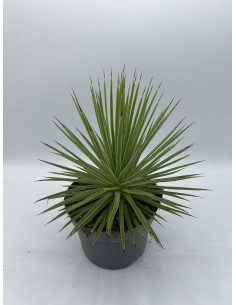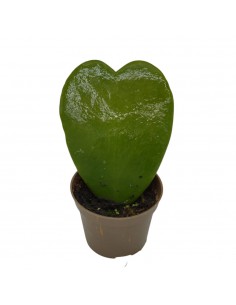SUCCULENT PLANTS, WHAT A PASSION!
THE TYPES:
There are about 10 thousand species of succulent plants, different in size and morphology: from the typical globular-shaped cactus like the "pillow of the mother-in-law" (Echinocactus grusonii), to the agave with long fleshy leaves that blooms only once in its life and then dies ; from prickly pears that provide very sweet watery fruits, to the very high saguaros with slow growth (photo below), which grow solitary in the deserts of North and Central America.
We can divide them into three groups. The first is the one that includes the Cactaceae of the desert (of the genera Mammillaria, Echinocereus and Rebutia), the desert cacti, which bloom in spring or summer unless they are exposed to too high temperatures in winter.
The second group is that of the succulent ground cover and climbing plants, appreciated for the particularly suggestive flowering. The easiest to find (and grow) are Lampranthus, Crassula and Ceropegia.
Third, the dwarf Succulents: small and delicate, they are particularly "demanding" and it is difficult to make them bloom. Among these are the Lithops, known as "living stones" and those of the genus Conophytum, with yellow or pink autumn flowers.
Among the succulent plants that resist even at low temperatures and which can therefore be kept in the garden are the Semperiverum: a dozen species belonging to the Crassulacee family, recognizable by the dense small fleshy rosettes, with triangular and pointed leaves.
HOW TO TAKE THEM EASY AND NATURAL:
The most important thing for the care of succulents is planting. Here are some tips:
-Choose a sunny and frost-free place on a well-draining soil or compost.
- place them in beds raised at least 25 cm from the ground, formed by a gravel base and a draining compost and placed in a sunny place, with a minimum temperature of 5 °, as they need good drainage. The flowerbeds must be slightly inclined on a gravel or shards base, which must be at least one third of the total height of the flower bed.
- in general, to develop succulent plants, they require heat, lots of light and good ventilation.
- in order not to make them die, they should be placed in a protected environment, a greenhouse or a winter garden. Here you can control temperature, light, water and humidity, and set the ideal conditions for them to survive during the cold season
- most of the succulent plants prefer full sun, but some like the filtered shade. The maximum daytime temperature in spring-summer should not exceed 27-30 °, while the nighttime temperature should be between 13 and 19 °. Some tropical species need instead more heat, with the minimum not less than 13-19 °.











